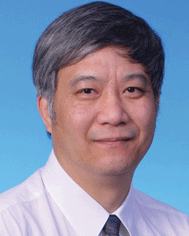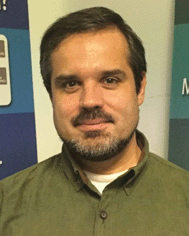Themed issue on shape-responsive fluorophores
Ben Zhong
Tang
ab and
Kyril M.
Solntsev
cd
aDepartment of Chemistry, Hong Kong Branch of Chinese National Engineering Research Center for Tissue Restoration and Reconstruction, and Institute of Molecular Functional Materials, The Hong Kong University of Science & Technology, Clear Water Bay, Kowloon, Hong Kong, China
bGuangdong Innovative Research Team, State Key Laboratory of Luminescent Materials and Devices, South China University of Technology, Guangzhou 510640, China
cSchool of Chemistry and Biochemistry, Georgia Institute of Technology, Atlanta, Georgia 30332-0400, USA. E-mail: solntsev@gatech.edu
dOLIS, Inc., 130 Conway Drive, Bogart, Georgia 30622, USA
Fluorogens are molecules whose fluorescence can be “turned on” as a response to external action. In some cases, off/on ratios as large as ∼104 have been observed, suggesting that such chromophores may have utility beyond static ones as reporter molecules. The recovery and/or intensification of fluorescence, through a variety of structural modifications of the chromophores and their complexation with proteins, DNA/RNA and other important biological hosts via host–guest interactions which freeze conformation or inhibit intramolecular fluorescence quenching, present a versatile and low-cost approach to high specificity in host identification if binding is highly specific. Indeed, the presence of recognition elements in the fluorogens which freeze the conformation and turn on the fluorescence are straightforward targets for a combinatorial approach in the development of biological host sensors. In addition to these specific host–guest interactions, some other more general factors may lead to a fluorescence increase. The first is an increase in medium viscosity, and the characteristic fluorogens are named molecular rotors. Another one is the aggregation of chromophores, and the observed fluorescence turn-on is defined as aggregation-induced emission (AIE).
Our mutual interest in these topics resulted in joining the efforts of our Atlanta and Hong Kong groups. It was our honor to organize two workshops on “Shape-Responsive Fluorophores” in Telluride, Colorado in 2013 and 2015. The workshops focused on the phenomenology, origin, and practical applications of shape-selective fluorophores, and attracted a very diverse audience of theorists and experimenters working actively on these systems. Several topics were explicitly and actively discussed, including AIE phenomenon in a wide variety of organic fluorogen systems, fluorescent rotors, mechanofluorescence, encapsulation of fluorescent probes in small hosts, and turn-on fluorescent ligands for proteins and DNA/RNA.
As a logical continuation of our effort, we edited this thematic issue of Journal of Materials Chemistry C based on, but not limited to, the workshop activities. The issue attracted authorship from 18 countries all over the world: 44 papers including 1 highlight, 6 reviews, 2 communications and 35 regular articles. Here we highlight a few of them, not undermining the significance of all other papers in this issue.
It is important to understand the mechanism of fluorescence restoration of AIEgens, and the theoretical paper of Peng et al. (DOI: 10.1039/c5tc03322e) sheds light on the widely accepted working mechanism of the restriction of intramolecular motion in AIEgen systems. AIEgens can be incorporated into large molecules, such as polymers (DOI: 10.1039/c5tc03298a), making them fluorescent thermometers. Conjugation of AIEgens to a broader range of macromolecules led to the development of an interesting class of AIE nanopharmaceuticals (DOI: 10.1039/c5tc03651h). Aggregation of AIEgens led not only to fluorescence restoration, but also to emission color tuning due to the formation of excimers (DOI: 10.1039/c5tc03289j and DOI: 10.1039/c5tc03776j). In the latter paper, unusual through-space “hot-dog” excimers were observed. Finally, numerous AIEgen utilities were discussed, including the uses of these fluorogens for analytical purposes, such as sensing hydrazine in solution and on paper substrates (DOI: 10.1039/c5tc01496d), probing biothiols (DOI: 10.1039/c5tc03272e), and other applications (DOI: 10.1039/c5tc03369a).
A few papers describe fluorogenic ligand–receptor (DOI: 10.1039/c5tc03411f) and ligand–oligonucleotide (DOI: 10.1039/c5tc03354c) interactions. Probably the most innovative is the paper by Povarova et al. (DOI: 10.1039/c5tc03931b) in which “the computational identification of protein hosts capable of binding to and enhancing fluorescence of GFP chromophore derivatives” was verified experimentally. From the large collection of molecular rotor papers, worth noting is the review article by Haidekker and Theodorakis (DOI: 10.1039/c5tc03504j) describing ratiometric fluorogens capable of self-calibration.
As can be seen, the authorship of this thematic issue is truly multidisciplinary, including theoreticians, materials scientists, biomedical engineers, and organic and physical chemists, demonstrating the equivocal importance of the subject. We hope that the readers find this thematic issue inspiring and that the new insights into the new class of fluorogens can be shared and trigger new interdisciplinary research efforts. We thank the authors for making excellent contributions to this thematic issue, and the editors and staff of Journal of Materials Chemistry C for their professional support.
| This journal is © The Royal Society of Chemistry 2016 |


